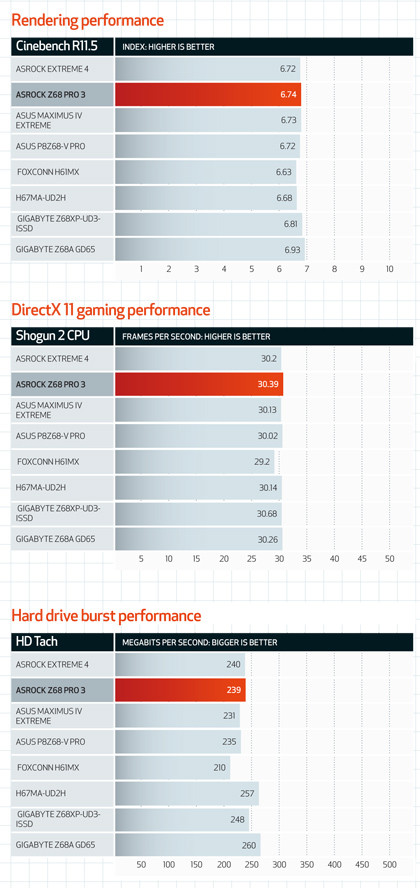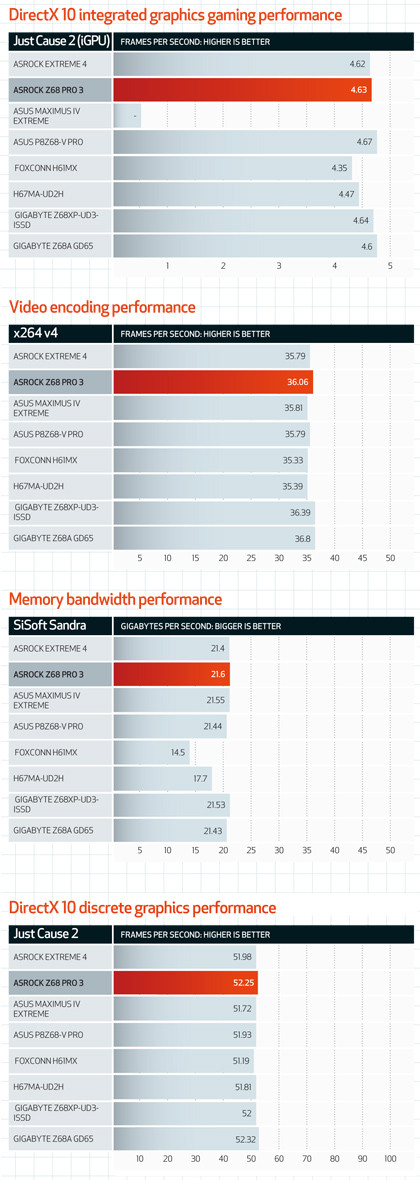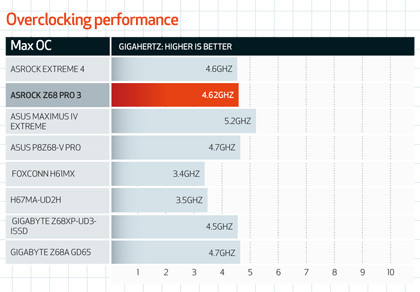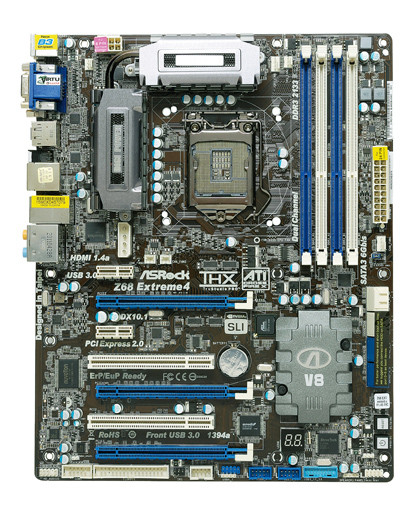Best Sandy Bridge motherboard: 8 reviewed
Motherboards from £55 to £260 benchmarked
With so much of the logic traditionally housed on the northbridge being shifting over to the CPU, the real-world performance differences between these motherboards can initially seem subtle.
Indeed, at stock speeds there's not a lot to separate them in gaming, video encoding or rendering. The devil, as ever, is in the details.
Take a look at the overclocking potential and power consumption and you'll see light between the best boards and those that are simply average.





And the best Intel Z68 motherboard is… ASRock Z68 Pro3

So was the Z68 worth waiting for? Well, in a word yes. In fact a very big yes. So much so that if the debacle over the SATA 3Gbps fault in the original P67 chipset was worth giving the last rites to the P67, then the Z68 has nailed the coffin firmly shut.
The new chipset is what the P67 should have been to start with: a high-end/performance chipset that supported both Intel's iGPU and some CPU overclocking chops too. The Z68 chipset though also brings with it a couple of interesting technologies.
Z is for za-za-zoom
As well as the Lucid Virtu tech there's Intel's Smart Response Technology (SRT) a fancy name for SSD caching. It's a great idea and it works well although it does take a while before the files get cached.
A bigger fly in the ointment is the availability of cheap, low-capacity SSDs which are pretty thin on the ground. That's where Gigabyte's Z68XP-UD3-iSSD settles into its own little niche outside of the rest of the boards in the test. Coming with a 20GB Intel SSD for just another £50, over equivalent Z68 boards makes it worth a look if the SRT tech floats your boat but the cost of SSDs doesn't.
Sign up for breaking news, reviews, opinion, top tech deals, and more.
Now with the arrival of the Z68 chipset the question is whether you should you even bother looking at a P67 board if you are in the market to upgrade? Unless you're a serious gamer then the answer is definitely no.
If you've been holding out against the switch to a Sandy Bridge board because of worries about the P67, then worry no more, go for Z68.
So which out the motherboards we've reviewed should stand on top of the podium?
Starting at the value end of things, the only thing we can say about the Foxconn H61MX is that it's a Sandy Bridge board for just £60. There's a good reason for that: it's very, very basic.
If you don't need overclocking then stretch the budget to get Gigabyte's H67MA-UD2H, which is £30 more but the user experience is much better.
If money is no object and integrated graphics aren't of interest but lots of overclocking options are and more features than you can shake a stick at then the mighty Maximus Extreme IV is the perfect choice. Until we get hold of Asus' RoG Z68 board this is still as good as it gets for the Sandy Bridge gamer.
All of which just leaves us with the Z68 boards. Gigabyte's Z68XP-UD3-iSSD is the most expensive but with a 20GB SSD built-in it's hardly surprising.
Both the MSI Z68A-GD65 and the Asus P8Z68-V Pro are well-featured, well-performing boards but we can't help but be drawn to the two ASRock offerings. The Extreme 4 has a decent feature list for not much money, but our bouquet winner is the ASRock Z68 Pro 3.
It may not be as feature-rich as some of the other motherboards, but if you want to try out Intel's new chipset, the Pro 3 will set you back just under a hundred quid. To show how good a deal that is, it's only a tenner more than Gigabyte's H67MA-UD2H.
Technology and cars. Increasingly the twain shall meet. Which is handy, because Jeremy (Twitter) is addicted to both. Long-time tech journalist, former editor of iCar magazine and incumbent car guru for T3 magazine, Jeremy reckons in-car technology is about to go thermonuclear. No, not exploding cars. That would be silly. And dangerous. But rather an explosive period of unprecedented innovation. Enjoy the ride.